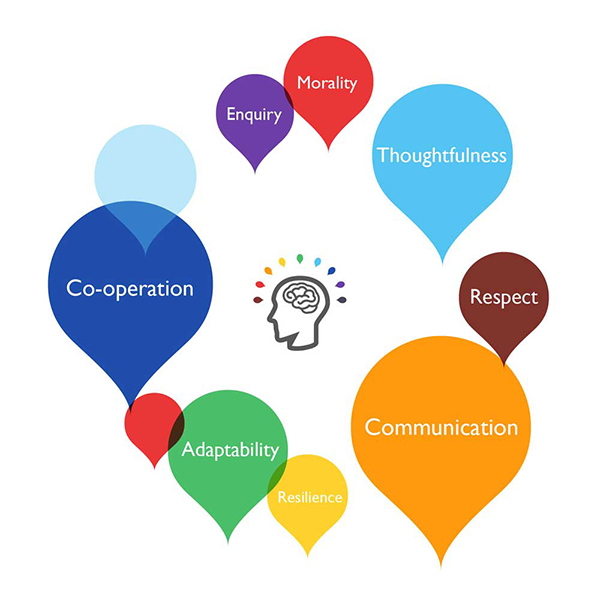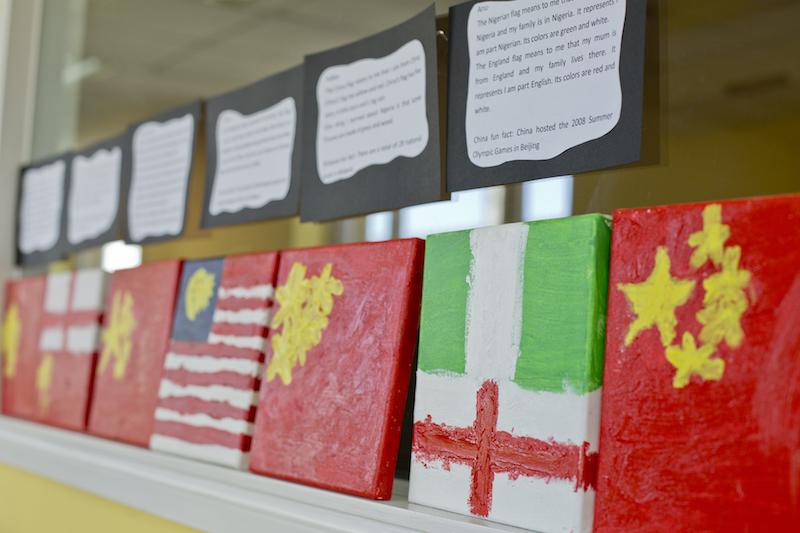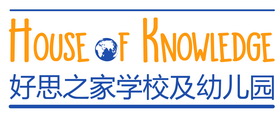One moment, the children were in the hallway and the next they were not only stepping into a new room, but also a lush new landscape that would help them forever remember the day’s lesson. The second grade class at House of Knowledge School (HoK) had walked into their classroom only to be amazed by how their teachers decorated the space with greenery, fake snakes, and even a diffuser to increase the humidity.
This creatively engaging introduction to the students’ unit about rain forests is a key component of the International Primary Curriculum (IPC), which HoK has adopted starting the academic year and is already seeing impressive results.
Fieldwork Education states that “the IPC is now the curriculum choice of international and national schools in over 1,800 schools in over 90 countries around the world.”

The curriculum’s success with children is based on numerous factors such as the design to have phrases that make up each of the dozens of units available for teachers to choose from. That introductory phase is, aptly enough, called the entry point. At least that’s the case put forth by Ms. Nellie Townsend, HoK’s Elementary Principal and IPC Coordinator. She describes those initial moments as a “wow factor” that ensures the students’ attention spans are attracted to the lesson in those crucial early moments.

Ms. Nellie Townsend, HoK’s Elementary Principal and IPC Coordinator
“The point is not for it to be ‘Oh, today we’re going to move to the next unit, and it will be about this,’” Townsend says of the too dull conventional approach that prompts many children to tune out just as the lesson is beginning. She says it’s important to begin with a bang by actually building a lush setting to help the children literally immerse themselves in their rain forest unit, or smell and taste cocoa for a unit about the chocolate industry, or interview a visiting reporter and snap shots of a photographer with a child-friendly camera for a unit about journalism.“
“We want to get them excited and have fun,” Townsend says. “That way they can’t wait to get further with whatever it is, rather than just telling them we’re going to work on writing.”
From there, the students move through the remaining phases within the IPC’s unit framework. Next up is a “knowledge harvest,” where the teacher leads an open-ended discussion about what they might already know about the topic.
“Now we’ve wowed you, and we want to ask you what you already know. The children have seen the diffuser and the artificial snakes. And there are no right or wrong answers, you’re free.” Townsend says. “As the teacher you’ll throw in some questions and moderate the discussion, but the students lead it otherwise. And now they’re wondering ‘What else will I find out?’ and ‘Is what I know exactly like some of the things I’m going to learn?’ So you’re building curiosity student is always at the center of it, as opposed to you dictating and leading. It’s their own little journey.”

The core values of House of Knowledge
The students’ prior knowledge is contrasted with the “explaining the theme” phase. This section is the only conventional lesson portion of the unit, in which teachers dictate information and crucial details, but only for succinct periods that don’t slow the momentum of the prior phases. After that comes a research component where the teacher guides students to check books or use online tools to get more information about the unit.
It all culminates with a presentation portion, where students can showcase what they’ve learned. But these are not high pressure, on-the-spot ordeals. Instead, the students display their work as part of a fun assembly that celebrates how far they have come to their teachers, parents, and peers.

The flags used in the exit point phase of the “Different Places Similar Lives,” unit.
Prime example: the end of a recent “Different Places Similar Lives” unit. It finished with an assembly-turned-international festival, as the students presented research about the culture of their homelands, along with flags, and tasty treats prepared by their parents. “There were scones from British parents, and one boy who’s half-Nigerian half-British was with his parents who brought food from both,” says Townsend. “And they had this celebration at the exit point, and they got to display what they’ve learned.”
The fun celebratory vibes were in step with the upbeat, innovative entry point that hooked students into the topic in the first place. But, more importantly, Townsend says the exit point allows the unit’s phases to come full circle, as students not only absorb information but also share what they’ve learned, taking ownership of it the entire time. “In that moment they become the teacher,” she says of the how the students present their findings to their parents. And at that point, those students are helping immerse others in the topic in the same way that their teacher did at the entry point, with a lush setting and an equally lavishly prepared lesson.
For more information on the IPC curriculum, click here.
 This post is paid for by HoK.
This post is paid for by HoK.
Photos: Uni You




